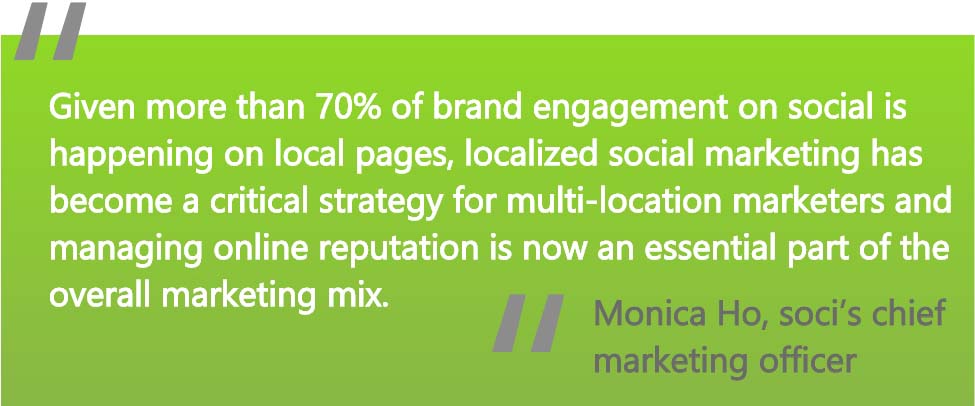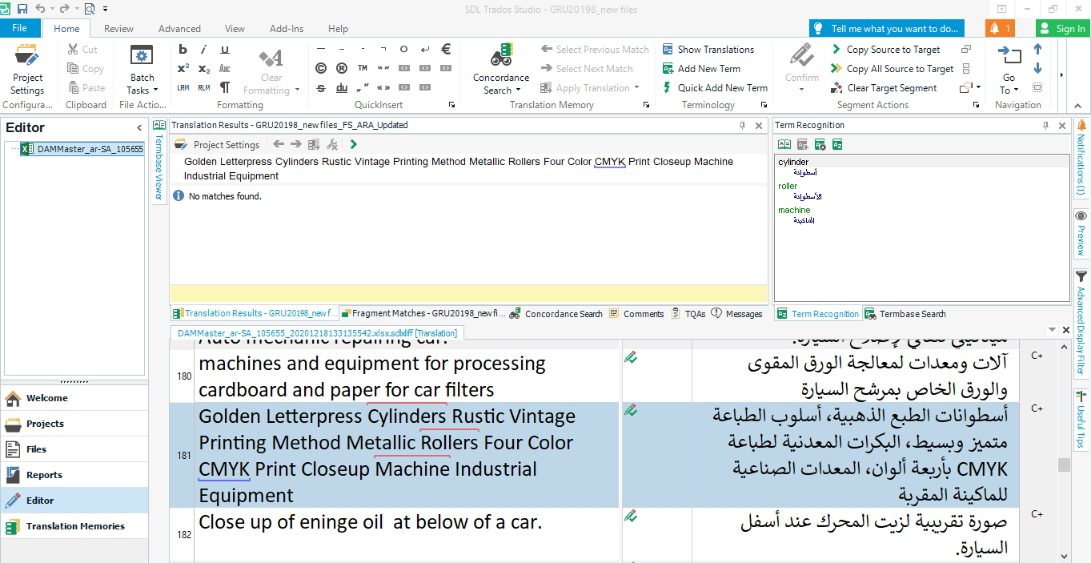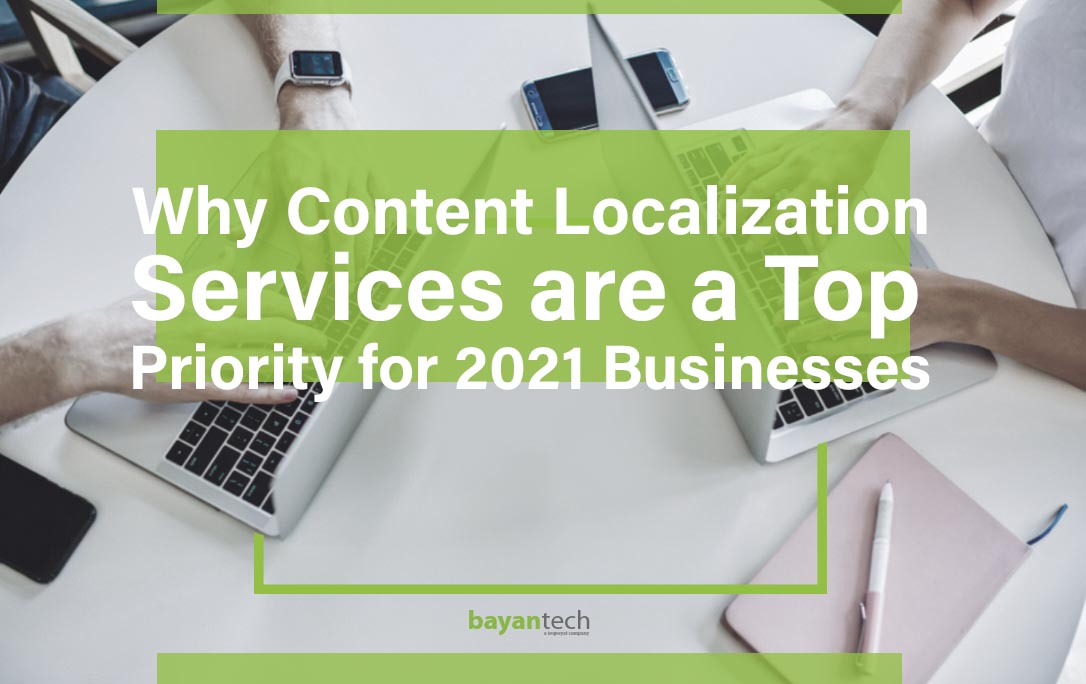Lockdowns and COVID-19 measures have changed the dynamics of how businesses grow and unfold, perhaps forever. Nowadays, thanks to the unprecedented advance of eCommerce and the massive adoption of social media channels, new potential customers from foreign markets may already be knocking on your door.
So, an excellent move could be to expand your brand into those marketplaces that already engage with your online presence and start connecting with global audiences. But how? We may have some answers for you. The first one is: you’ll need Content Localization.
In this post, you’ll find everything you need to know about content localization services, alongside some insightful tips about content localization strategies, as well as content localization best practices. Let ‘s get started.
What Is Content Localization?
Content Localization is, essentially, adapting your content so it’s not only presented in your target audience’s language but also connects directly with their interests, demands, and needs on a culturally relevant and highly personalized level.
Now, consumers are getting tons of content every day. But not all that content is relevant content. High-volume approaches to content marketing make up a crowd that you want to stand out from. And that’s exactly what you can achieve by implementing profound content localization services.
Why You Should Care About Content Localization
According to McKinsey, 10 years of projected growth for the e-commerce ecosystem were compressed into just 3 months due to the dynamics set by the COVID-19 pandemic. This means that today, most businesses and brands operate in the digital sphere, whether it’s through social media platforms, messaging/delivery apps, their own websites, or the three combined. And if you’re going online, you’re going global, even if you haven’t realized it yet.
This is the main reason why content localization should not only concern you but should be an organic part of your content marketing strategy. Simply translating your content won’t do. Customers are more likely to respond to culturally relevant messages that interact with them based on their daily interests and concerns. And they never expected more convenient, personalized, and holistically tailored content from brands and businesses than they do now.
At the end of the day, your customers will be less interested in what you’re offering if they cannot understand your message. As obvious as this may seem, investing in professional translation and localization services will make a huge difference in your business’s global expansion strategy.
Now, let’s dive into just 2 of the many key benefits that content localization can bring to your brand:
Boosts Your International SEO
One thing for sure about marketing is that the most informative and extensive content tends to rank higher in search engines. Yes, creating content is a considerable time investment, but translating it into different languages will greatly boost your SEO because search engines process translations as unique content.
When someone is searching for something in, for instance, German, and you’re only posting the source language version of your web content, no matter how much you’re offering what that person is looking for, they will never reach your site.
Having said that, it’s not just about translating content automatically and thoughtlessly. In other words: Machine Translation just won’t be enough. While SEO will improve, translated content must be sensibly tailored to make sense to the target audience.
It’s a top priority to provide the highest quality content to your customers, and that is why your content localization project should only be carried out by professional translators with in-depth knowledge of the culture you’re targeting and subject matter expertise in your business’s sector.
Increments Customer Acquisition & Satisfaction
Content localization services are an essential acquisition if your goal is to start operating in new thriving markets and attract potential multilingual clients.
But converting customers is not the end goal here, it’s only the beginning. You must have a strategy to increase their engagement rates and retain them. That is why if only a small part of your content is translated, you may lose them after a while.
While there is a wide variety of content today, and translating it all can be challenging for your business, don’t worry. It’s best to start with the content that performs better and is in direct contact with your customers (for instance, emails, website translation, and social media). And once that is accomplished, continue with the rest. You can check out our website localization services, if you’re in need of such work.
The thing about localized content is that 70% of brands’ high-value engagement takes place on local pages.

But what is ”high-value engagement”? It’s the kind of engagement that will help your brand grow and unfold in new markets.
High value engagement includes:
- Direct messages
- Shares
- Comments
- Reviews
- Newsletter signups
These instances are classified in this way because they take more time and effort than a simple “like” and indicate a more significant connection with your audience. These are the interactions that the algorithms take into account to position your content. And these are the interactions that drive sales.
So, what will make your business stand from the crowd is highly-localized and culturally relevant content. Take every opportunity to connect with people close to your individual business locations. Get involved in the community, post about local events, or create special discounts from them.
Each marketplace is unique and the content you create for it should be equally exclusive. In the next section, we’ll share some tips to successfully localize your content.
Sign up to our newsletter to receive the latest blogs and news.
3 Tips for an Exceptional Content Localization Services Strategy
The first thing to keep in mind when you start your content localization process is that, depending on your goal, there are different ways to do it:

Marketing Translation & Localization: the content will be translated and adapted to make sense within the target audience’s culture (for instance, adapt time and date formats, measurement systems, colors, images, and layouts). The final result needs to meet the cultural, technical, and legal requirements of the foreign market.
Marketing Transcreation: if localization means going beyond language and addressing cultural adaptation, marketing transcreation is the next level. Transcreation is the procedure by which local marketers reshape the marketing material, and, while maintaining the essence of the original message, make it appear locally made. This process makes global products or services significantly more digestible for a local audience.
For this, those who are in charge of producing the transcreated content must have the creative freedom to make the changes that are necessary so that the global message of the brand resonates with the local audience.
The ultimate goal of a successfully transcreated message is to generate the same emotional response from both the target audience and the source audience.
Whichever option fits best with your marketing strategy, any reliable and competent localization company will have the best desktop publishing services in their portfolio to ensure the highest level of quality in the final outputs, in terms of both content and format.
While we’ve covered localization strategy tips in one of our latest posts more extensively, here are a few more:
1- Language is Crucial
Pretty obvious right? Except that we don’t only mean that the language of your content must be that of your targeted viewers. What we’re trying to say is that you also have to take into account certain specific spellings, for instance, that may exist within the same language, in different regions. For instance, localization (USA is written localisation in the UK.
Also, when writing copy and translating content, one must know which language to use in which context. The vocabulary and terminology you use will depend on your customers’ background knowledge. Besides, straight translation isn’t the goal here. When you create content, you use metaphors or cultural expressions typical of your language that may not hold any value for the target language.
Are You Looking for Content Localization Services and Don’t Know Where to Start?
We’ve got a goal-oriented resource for you.
2- Design & Formatting
Global businesses tend to create dynamic and aesthetic content, be it websites, social media posts, or content made to be printed such as brochures or posters.
Great content is the best way to connect with potential customers. But these same businesses sometimes forget how fundamental it’s to target the local characteristics of each segment: addressing what makes them unique and differentiates them from the rest.
This is the main difference between great content and valuable content. For example, if your business wants to expand to Middle Eastern markets (where right-to-left languages are predominant), you will have to think beyond words and reconsider how your content is presented. The design of your layout will vary depending on the region in which you want to present your content. This is why the best localization and desktop publishing projects are carried out by experienced multimedia content marketing services, working with teams of expert translators and DTP specialists with in-depth knowledge in the field.

3- Culturally Relevant Messages
Just as readability is important when you create content, highly visual components like images, symbols, and colors are also incredibly important. Depending on the culture we want to target, a color can have extremely different connotations. The best localization companies will adapt and translate your content in a way that’s sensitive to your client’s culture.

Best Practices & Translation Solutions for Successful Content Localization Services
Whether you stumbled across this post in search of Marketing Translation Services, or you’re a translator in training hoping to learn more about Content Localization Services, this section may hold value to you. Here are some of our best practices when it comes to content localization services:
The Right Localization Management Tool
Translation services (& localization) tend to be in every successful business’ digital transformation strategy. Nowadays, thanks to the industry’s constant evolution, translation processes have turned towards cloud-based localization content management systems.
This has considerably reduced time, cost, and complexity in content localization projects, as well as ensuring accurate, effective, multilingual content for international marketplaces.
A successful localization is a long and complex process. As a professional localization agency, we advise that using a high quality localization management platform can mitigate the complications and challenges of this type of processes.
For instance, some software can centralize the translation process, saving valuable time and significantly reducing translation costs.
Betting on a sophisticated translation management system will achieve a more complete and accurate output. Integrating CAT tools and translation memory, within the system, fills in the gaps in translations by understanding phrases and terms that have been included and pre-approved by the team of translators. A translation management system will also improve the quality of the machine translation, giving translators a more reliable and accurate base on which to work later.

A Translation Memory can collect large amounts of material that will serve as a reference and speed up the translation process by always having useful, relevant information at hand such as unique words that have a specific meaning in each locale.
Besides, these systems will be continuously updated along with the style guides and supported fonts, always keeping pace with human work, guaranteeing authenticity and coherence. Also, it creates and systematizes workflows, managing deadlines and notifying any delay that may happen.

Proper Market Locale-Terms
Before you start translating, it’s crucial to have a good up-to-date glossary of terminology specific to each locale. Strengthening the integrity of your messages is a priority, thus closing language gaps that may separate you from the new community you are trying to create. This is how fluid and agile translation workflow will be established. It’s key to ensure that each message is accurate and credible within each segment of customers, getting your new customers to trust the content you are sharing with them. This will give your brand authenticity and local authority.
The Perfect Fit
And that should be a detail-oriented translation agency with years of global experience in content localization services. Choosing a localization service fully equipped with the best and most professional practices is the safest way to achieve your content localization project successfully and without delays.
You can imagine the worst-case scenario: you get all your content translated, but it has no impact on your new customers. To avoid irrelevance, a rigorously designed localization strategy must be implemented.
And that’s where our work at bayantech begins. We invite you to read our Quality Assurance Policy to understand how we work and what drives us to achieve excellence in every one of our localization projects.
Partner Up With Localization Industry Experts
Yes, Content Localization can be challenging for sure. But not if you leave it in the hands of experts.
At bayantech, we’re a leading translation company offering the best Content Localization Services so you can successfully reach global markets and scale with quality content. With almost two decades of experience, we’ve worked with industry giants across the MENA region and beyond, delivering top content localization every time, within their strict turnaround times.









